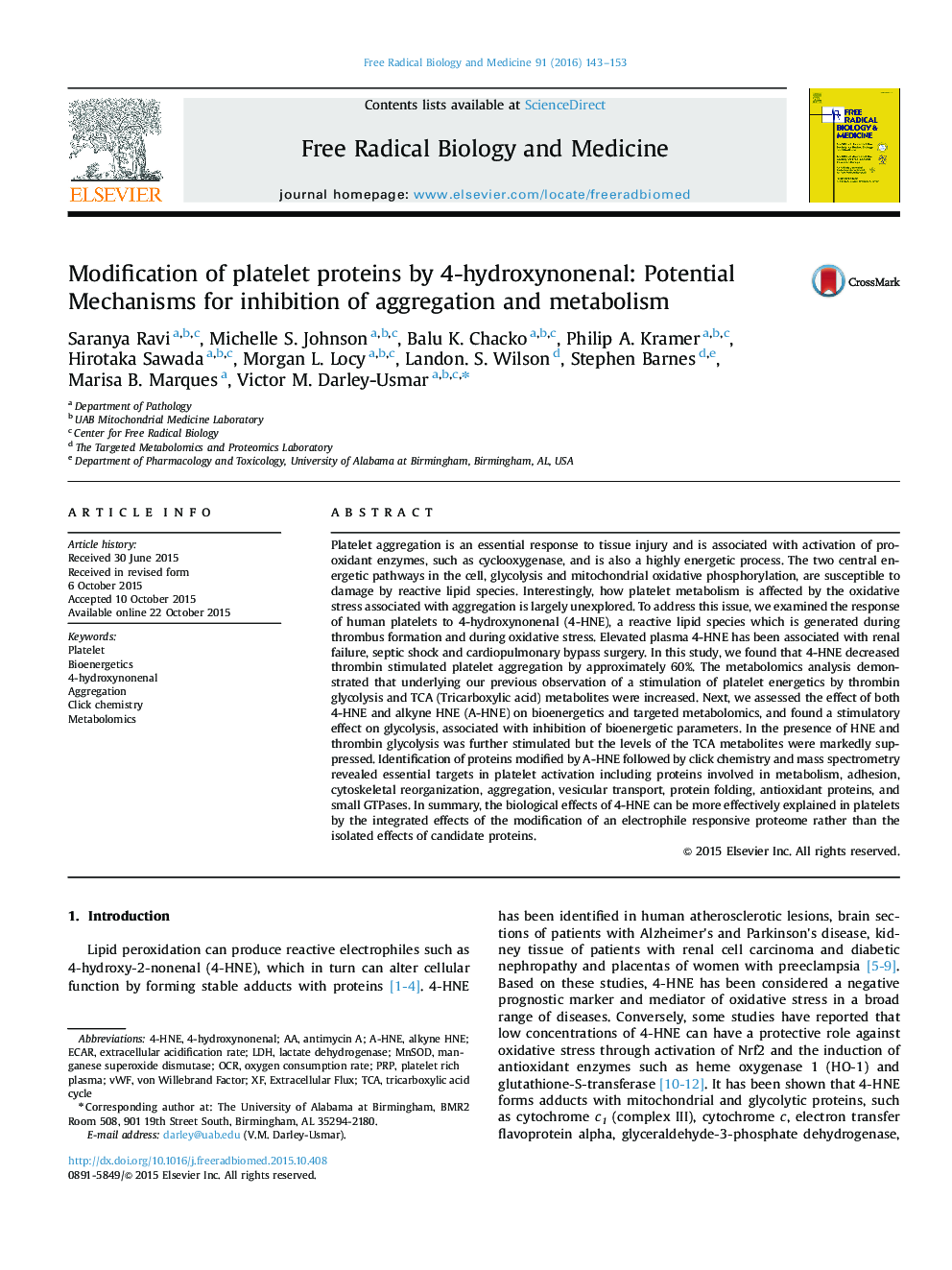| Article ID | Journal | Published Year | Pages | File Type |
|---|---|---|---|---|
| 1907789 | Free Radical Biology and Medicine | 2016 | 11 Pages |
•The effect of 4-HNE on platelet aggregation and metabolism were determined.•4-HNE inhibited thrombin induced platelet aggregation.•4-HNE decreased mitochondrial respiration in the resting and thrombin activated state.•A-HNE modifies proteins regulating platelet activation and metabolism.
Platelet aggregation is an essential response to tissue injury and is associated with activation of pro-oxidant enzymes, such as cyclooxygenase, and is also a highly energetic process. The two central energetic pathways in the cell, glycolysis and mitochondrial oxidative phosphorylation, are susceptible to damage by reactive lipid species. Interestingly, how platelet metabolism is affected by the oxidative stress associated with aggregation is largely unexplored. To address this issue, we examined the response of human platelets to 4-hydroxynonenal (4-HNE), a reactive lipid species which is generated during thrombus formation and during oxidative stress. Elevated plasma 4-HNE has been associated with renal failure, septic shock and cardiopulmonary bypass surgery. In this study, we found that 4-HNE decreased thrombin stimulated platelet aggregation by approximately 60%. The metabolomics analysis demonstrated that underlying our previous observation of a stimulation of platelet energetics by thrombin glycolysis and TCA (Tricarboxylic acid) metabolites were increased. Next, we assessed the effect of both 4-HNE and alkyne HNE (A-HNE) on bioenergetics and targeted metabolomics, and found a stimulatory effect on glycolysis, associated with inhibition of bioenergetic parameters. In the presence of HNE and thrombin glycolysis was further stimulated but the levels of the TCA metabolites were markedly suppressed. Identification of proteins modified by A-HNE followed by click chemistry and mass spectrometry revealed essential targets in platelet activation including proteins involved in metabolism, adhesion, cytoskeletal reorganization, aggregation, vesicular transport, protein folding, antioxidant proteins, and small GTPases. In summary, the biological effects of 4-HNE can be more effectively explained in platelets by the integrated effects of the modification of an electrophile responsive proteome rather than the isolated effects of candidate proteins.
